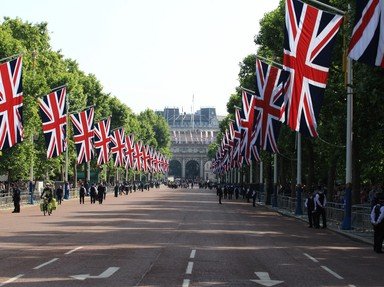Quiz Answer Key and Fun Facts
1. King James I of Scotland married his wife, Joan, as part of the deal which released him from 18 years of captivity in England. She was a member of what powerful family, the descendants of John of Gaunt and Katherine Swynford?
2. Mary of Guelders was queen consort of Scotland from 1449 to 1460 as the wife of King James II. The former Duchy of Guelders, part of the Holy Roman Empire, largely fell within which modern day European country?
3. Scotland gained more than just a queen when King James III married Margaret of Denmark in 1469, as Denmark pledged which islands to Scotland in place of Margaret's dowry?
4. Margaret Tudor's ten year marriage to King James IV of Scotland ended with his death at the Battle of Flodden in 1513. How did her second marriage to the Earl of Angus end?
5. Madeleine of Valois, the first wife of King James V, had an extremely short tenure as queen consort of Scotland. She died just six months after marrying James and less than two months after setting foot in Scotland. To what infectious disease, also known as consumption, did Madeleine succumb?
6. Mary, the widowed daughter of the Duke of Guise, became the second wife of the widowed King James V of Scotland in 1538. However, another recently widowed king had unsuccessfully competed against James for her hand in marriage. Who was this rejected suitor?
7. Queen's House in Greenwich, the first 'Palladian' style house to be constructed in Britain, was commissioned by the wife of King James I of England and VI of Scotland. What was her name?
8. The marriage of the Duke of York (the future King James II of England and VII of Scotland) to Anne Hyde was unusual for a 17th century royal wedding because the bride was both a commoner and heavily pregnant. In what circumstances had James and Anne met?
9. Mary of Modena was the second wife of King James II of England and VII of Scotland and very unpopular in 17th century England due to the religious denomination she shared with her husband. What was it?
10. Maria Clementina Sobieska was a rich heiress and a granddaughter of King John III of Poland. In 1719 she agreed to marry James Francis Edward Stuart, who had claimed the title of King James III of England (and VIII of Scotland) since his father's death. What calamity befell Maria as she travelled to Italy for the wedding?
Source: Author
Fifiona81
This quiz was reviewed by FunTrivia editor
bloomsby before going online.
Any errors found in FunTrivia content are routinely corrected through our feedback system.

